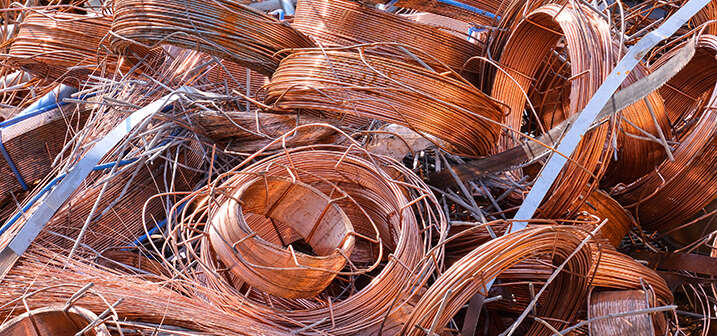Metals recycling is a huge industry and is growing fast. An increasing need for metals plus difficulty in mining these materials is driving demand for recycled aluminum, copper, and steel. Both the aluminum and steel recycling markets are predicted to grow at a CAGR of around 8% in the next four years, whereas copper is expected to grow by 4% in the same time frame.
For recycling facilities, this is good news, providing the equipment used to analyze and sort the scrap material can cope with the demand. Hitachi’s latest optical emission spectrometer OE750 and OE750 bring the accuracy, speed, and affordability necessary to the recycling yard. Here’s how these advanced instruments meet the main challenges faced by scrapyards and high-end recycling facilities today:
Dealing with huge scrap turnover
A large recycling facility or scrap yard can have to sort through a huge amount of ferrous and non-ferrous scrap. Up to tens of thousands of tons per week is typical for large facilities. The ability to rapidly sort and verify the exact composition of each piece of scrap is essential to keep up with the huge volumes constantly arriving at the facility.
The OE720 / OE750 deliver the rapid analysis needed. The analysis itself takes only seconds and the instruments have been designed with fast start-up times to reduce downtime at the beginning of every shift.
Accurately identify the precise composition of metal to supply as feedstock
Traditionally, handheld XRF analyzers have been used to separate and sort scrap metals. However, as demand within the foundry sector grows, OES analysis technology is becoming increasingly important to ensure recycled aluminum, copper and steel meet stringent specifications to be suitable for melt feedstocks.
However, not all OES instruments are the same. Both instruments in the OE series use superior CMOS detector technology coupled with a LightWing (patent pending) optic design. This combination means that with just the one instrument, the entire range of elements within metals can be detected within the ppm range necessary to meet today’s industry demands.
Meeting tough regulations
Recycled metals quality may be the driving force behind high end analysis, but it’s not the only challenge faced by recycling facilities. To compete in today’s landscape and qualify as a supplier for refineries, recycling facilities must comply with an increasing range of environmental, safety, radioactivity and transportation regulations.
The OE series helps facilities meet these by ensuring results are reliable and retrievable after analysis. Connectivity to Hitachi’s cloud-based data management system ExTOPE Connect ensures you can find the results when you need to – invaluable at audit time.

Ability to analyze different types of metals, including copper and aluminum
To get the most out of recycled scrap, it’s important to be able to analyze tramp and trace elements within different base metals.
The CMOS detector within the OE series can detect key elements within copper, aluminum and steel matrices. For example, it can determine phosphorus to very low limits in near eutectic and hypereutectic aluminum-silicon alloys, and the OE750 model can analyze N in steel, H and O in titanium and O in copper.
Extremely cost effective
The OE720 spark spectrometer covers the entire spectrum on non-gaseous elements in metals, and the OE750 adds gas analysis to the capability. Ground-breaking technology gives these analyzers the capability of much more expensive analyzers, bringing high quality analysis within reach for many recycling facilities. But the cost savings don’t end there. These instruments have been designed with low running costs in mind and have reduced argon and power consumption when compared with previous models.
Find out more…
From intuitive software to enhanced performance, the ground-breaking OE series could make all the difference to your scrap recycling analysis capability. Get in touch to arrange a demo.
Get in touch
You might also be interested in:
Our full range of spark OES instruments
View an on-demand spark OES demo
Book a 1:1 live demo